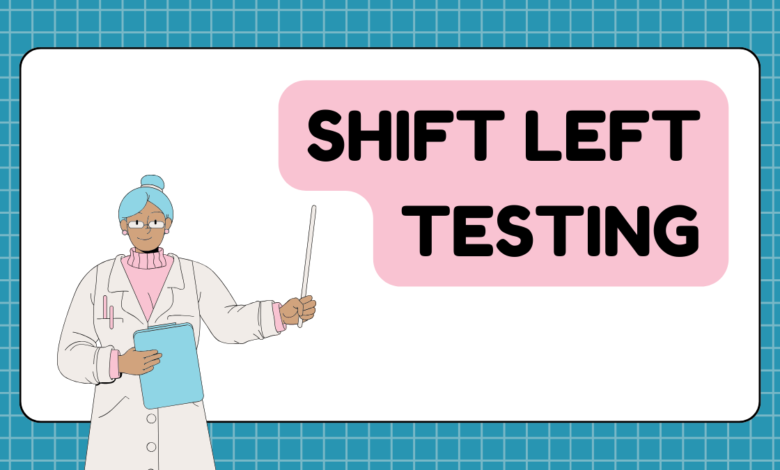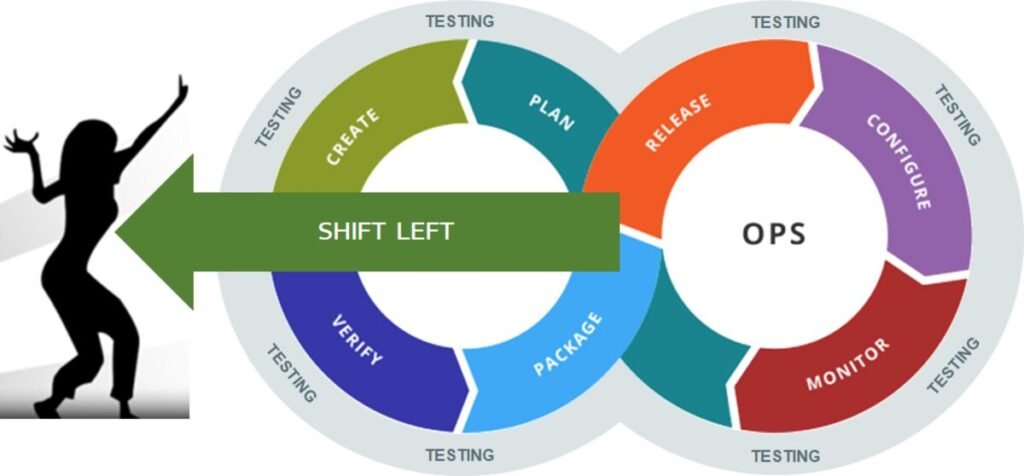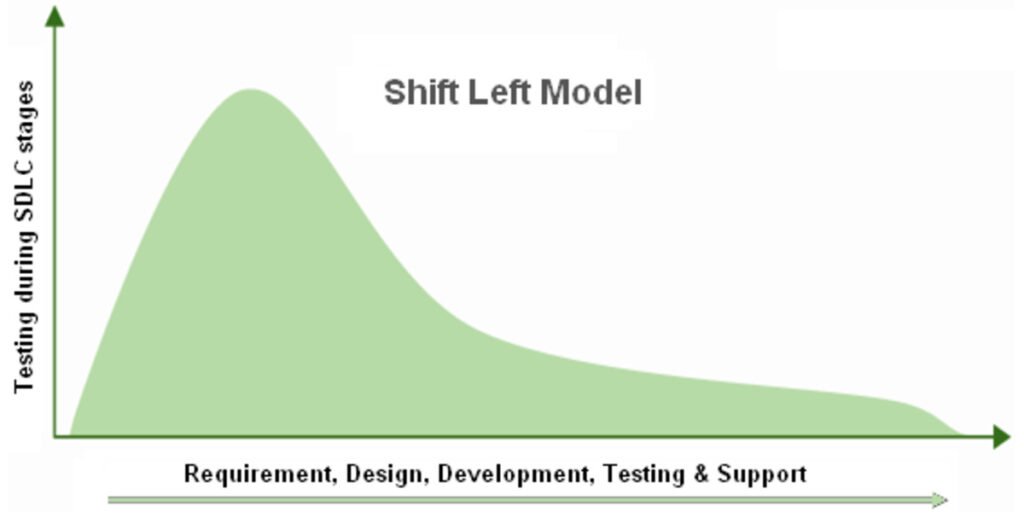Shift Left Testing: Pioneering Quality from Day One

Shift Left Testing: In the quick-moving universe of programming improvement, the expression “Shift Left Testing” has been causing disturbances. But what exactly does it mean? Imagine you’re building a house. Instead of waiting until the end to check if the foundation is solid, you start inspecting it from the moment the first brick is laid. That’s the essence of the Shift Left Test. It’s about moving the testing phase earlier in the development process, catching issues sooner rather than later.
Understanding Shift Left Testing
Shift Left Testing is a mindset shift in software development. Traditionally, testing happens towards the end of the development cycle. But with the Shift Left Test, it starts much earlier, often alongside coding. This approach emphasizes the importance of quality assurance right from the beginning.
Benefits of Shift Left Testing

Improved Quality
Shifting testing left means catching bugs sooner, leading to higher-quality software. By addressing issues early, you prevent them from snowballing into bigger problems later on.
Faster Feedback Loops
With testing integrated earlier, developers receive feedback quickly. This allows for faster iterations and adjustments, ultimately speeding up the development process.
Cost Savings
Fixing a bug in the early stages of development is far cheaper than fixing it post-release. Shift Left Testing helps save costs by reducing the number of defects that make it to production.
Implementing Shift Left Testing
To implement Shift Left Testing effectively, teams need to embrace a collaborative approach. Developers and testers must work hand in hand from the get-go. Automation also plays a crucial role, automating repetitive tests to free up time for more complex scenarios.
Tools for Shift Left Testing
Numerous tools are available to facilitate the Shift Left Test. From unit testing frameworks like JUnit for Java to behavior-driven development tools like Cucumber, there’s something for every team and every language.
Challenges and Solutions

Resistance to Change
Some team members may be resistant to adopting Shift Left Testing, fearing it will disrupt their workflow. Education and gradual implementation can help alleviate these concerns.
Skill Gap
Shifting testing left requires a different skill set. Providing training and resources can bridge the gap and empower team members to embrace this new approach.
Real-Life Examples
Companies like Google and Amazon have successfully embraced Shift Left Testing, incorporating it into their development pipelines. Their experiences serve as inspiration for others looking to make the shift.
Shift Left Testing vs Traditional Testing
Shift Left Test mitigates these issues by detecting and addressing bugs early on, resulting in smoother development cycles.
Future Trends in Shift Left Testing
As technology evolves, so too will Shift Left Testing. Expect to see more automation, AI-driven testing, and seamless integration with development workflows in the years to come.
Exploring Shift Left Testing Further

Understanding the Shift Left Mentality
At its core, Shift Left Testing embodies a proactive mindset. It’s about anticipating challenges before they arise rather than reacting to them after the fact. This mentality encourages a culture of continuous improvement, where every team member plays a part in ensuring the quality of the final product.
The Collaborative Approach
One of the key tenets of Shift Left Test is collaboration. Gone are the days of testers working in isolation from developers. Instead, teams come together, breaking down silos to share knowledge and expertise. This collaborative approach fosters innovation and fosters a sense of collective ownership over the product.
Embracing Automation
Automation is the backbone of Shift Left Testing. By automating repetitive tasks such as regression testing and deployment, teams can focus their efforts on more meaningful work. This not only speeds up the testing process but also reduces the risk of human error.
The Impact of Shift Left Testing on Product Quality
Early Bug Detection
One of the most significant benefits of Shift Left Testing is its ability to detect bugs early in the development process. By catching issues sooner, teams can address them before they have a chance to escalate, ultimately leading to a more stable and reliable product.
Continuous Feedback Loop
Shift Left Test creates a continuous feedback loop between developers, testers, and stakeholders. As a result, the final product better aligns with user expectations.
Improved User Experience
At the end of the day, Shift Left Testing is all about delivering a better user experience. By prioritizing quality from the outset, teams can create products that are more intuitive, reliable, and ultimately, more enjoyable to use.
Overcoming Challenges in Shift Left Testing Implementation

Cultural Shift
Implementing Shift Left Testing requires a cultural shift within an organization. Overcoming this resistance requires clear communication, education, and perhaps most importantly, leading by example.
Integration with Existing Processes
Integrating Shift Left Test into existing development processes can be challenging. Teams may need to reevaluate their workflows and toolsets to ensure they’re conducive to early testing. This may require investment in new tools or modifications to existing ones.
Conclusion: Embracing the Future of Testing
In an era where speed and quality are paramount, Shift Left Testing offers a path forward. By prioritizing testing from the outset, teams can build better products faster and more efficiently.
FAQs
How does Shift Left Test impact time to market?
Shift Left Testing can significantly reduce time to market by catching issues early and enabling faster iterations. This ultimately allows products to reach customers sooner, gaining a competitive edge in the market.
Does Shift Left Test replace traditional testing methods entirely?
Shift Left Test doesn’t replace traditional testing methods but rather complements them. While it emphasizes early testing, comprehensive testing is still needed throughout the development lifecycle.
How does Shift Left Testing impact team dynamics?
Shift Left Test encourages closer collaboration between developers, testers, and other stakeholders. This fosters a culture of shared responsibility and accountability, leading to stronger team dynamics overall.
What are some best practices for implementing the Shift Left Test?
Some best practices include starting small and gradually scaling up, investing in automation tools, fostering a culture of continuous improvement, and soliciting feedback from team members throughout the process.
Read More: Grow Your Freelance Business





